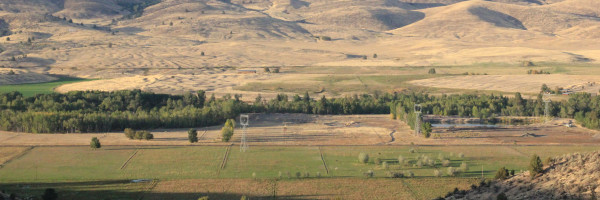Rural: Difference between revisions
No edit summary |
No edit summary |
||
| (14 intermediate revisions by the same user not shown) | |||
| Line 1: | Line 1: | ||
{{ | {{Chapter | ||
| | | blueprint = Rural | ||
| | | sectors = Rural | ||
| | | authors = Josh Seidemann, Ed Lisle | ||
| | | poc = Josh Seidemann | ||
| | | email = jseidemann@ntca.org | ||
| document = Under_Development.pdf | |||
| | | chapter = 700 | ||
| image = RuralChapter.jpg | |||
| summary = A rural community is typically defined as a group of people living in a rural area, which is an area that is not considered to be urban or suburban. Rural areas are typically characterized by lower population densities, less developed infrastructure, and a greater reliance on agriculture and natural resources for economic activity. | |||
| | |||
}} | }} | ||
__TOC__ | |||
The definition of a rural community can vary depending on the context and the criteria used to define it. For example, it can be defined by geographic boundaries, such as census tracts or administrative divisions, or by population density, such as areas with fewer than a certain number of residents per square kilometer. | |||
Rural communities are often defined by the characteristics of their residents, such as their occupation, income, education level, and access to services and amenities. These communities can vary greatly in terms of their size, population density, and economic and social characteristics. Some rural communities are isolated and remote, while others are more connected to urban areas and have more access to services and amenities. | |||
Additionally, Rural communities can be defined by the cultural, historical, and environmental characteristics, for example, a rural community that is based on traditional farming practices, or a community that is based on indigenous culture or history. | |||
==Economic Activity== | |||
Primary activities in rural communities can vary depending on the specific community and its location, but some common activities include: | |||
*'''[[Agriculture]]''': Many rural communities rely heavily on agriculture as a primary source of income, with farming and ranching being the most common types of agricultural activity. | |||
*'''[[Forestry]]''': In many rural communities, forestry is an important industry, with logging and wood products being a primary source of income. | |||
*'''[[Fishing of natural resources]]''': Communities that are located near bodies of water, such as lakes, rivers, or the ocean, may rely on fishing, hunting, or other natural resources as a primary source of income. | |||
*'''[[Tourism]]''': Many rural communities depend on tourism as a primary source of income, with visitors coming to enjoy outdoor activities such as hiking, fishing, hunting, and skiing, as well as cultural and historical attractions. | |||
*'''[[Environmental conservation]]''': Many rural communities are also actively involved in environmental conservation, such as protecting and preserving natural resources, wildlife, and habitats. | |||
Latest revision as of 23:01, January 15, 2023
| Rural | |
|---|---|

| |
| Sectors | Rural |
| Contact | Josh Seidemann |
| Topics | |
- Authors
A rural community is typically defined as a group of people living in a rural area, which is an area that is not considered to be urban or suburban. Rural areas are typically characterized by lower population densities, less developed infrastructure, and a greater reliance on agriculture and natural resources for economic activity.
The definition of a rural community can vary depending on the context and the criteria used to define it. For example, it can be defined by geographic boundaries, such as census tracts or administrative divisions, or by population density, such as areas with fewer than a certain number of residents per square kilometer.
Rural communities are often defined by the characteristics of their residents, such as their occupation, income, education level, and access to services and amenities. These communities can vary greatly in terms of their size, population density, and economic and social characteristics. Some rural communities are isolated and remote, while others are more connected to urban areas and have more access to services and amenities.
Additionally, Rural communities can be defined by the cultural, historical, and environmental characteristics, for example, a rural community that is based on traditional farming practices, or a community that is based on indigenous culture or history.
Economic Activity
Primary activities in rural communities can vary depending on the specific community and its location, but some common activities include:
- Agriculture: Many rural communities rely heavily on agriculture as a primary source of income, with farming and ranching being the most common types of agricultural activity.
- Forestry: In many rural communities, forestry is an important industry, with logging and wood products being a primary source of income.
- Fishing of natural resources: Communities that are located near bodies of water, such as lakes, rivers, or the ocean, may rely on fishing, hunting, or other natural resources as a primary source of income.
- Tourism: Many rural communities depend on tourism as a primary source of income, with visitors coming to enjoy outdoor activities such as hiking, fishing, hunting, and skiing, as well as cultural and historical attractions.
- Environmental conservation: Many rural communities are also actively involved in environmental conservation, such as protecting and preserving natural resources, wildlife, and habitats.

